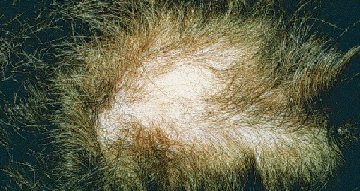U.C.L.A. Rheumatology Pathophysiology of Disease Course Lecture,
Second Year Medical School 1997
Systemic Lupus Erythematosus Page 9
The activation of complement results in the release of chemotactic factors which attract polymorphonuclear leukocytes (PMNs) to the site. The PMNs cause local tissue damage by phagocytosis and by the release of lysosomal enzymes, free oxygen radicals, and other toxic chemical reactions during the inflammatory response. The terminal complement activation complex (C7,8,9) also directly damages cell membranes. The tissues where immune complexes deposit are damaged in the resultant inflammatory reaction as "innocent bystanders" since the antibodies are not specifically directed against those tissue sites. DNA-antiDNA complexes may trap nonspecifically in the glomerulus and cause an inflammatory reaction (glomerulonephritis). This results in proteinuria, hematuria, reduced renal blood flow, hypertension and ultimately renal failure.
Immune complexes may be the cause of many of the clinical features of SLE: alopecia (figure 4) and skin rashes (figure 5), (where the immune complexes deposit in the dermal-epidermal junction and hair follicles); joint inflammation (figure 6), (synovial lining); pleuritis and pericarditis; and vasculitis due to deposits in the endothelium of blood vessels. The inflammation of blood vessels results in the occlusion of their lumens and ischemic damage to the organs which the blood vessels supply. Infarction of digits may occur as well as small and large bowels, and occasionally the myocardium (figure 7-9).

Figure 2. Alopecia in a SLE patient, from Dieppe.